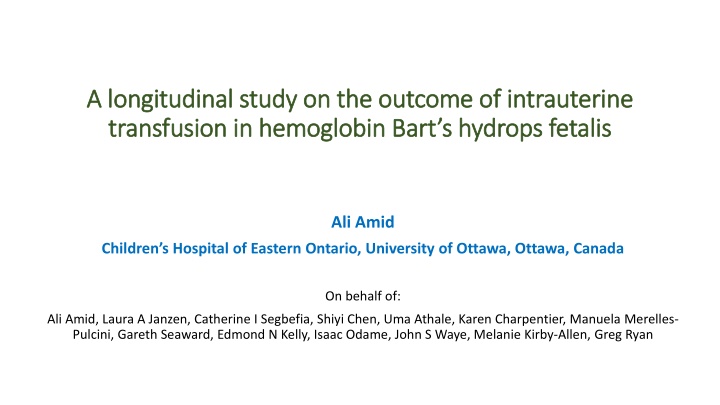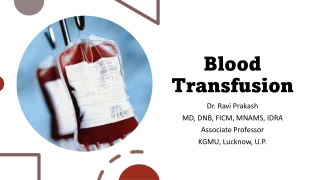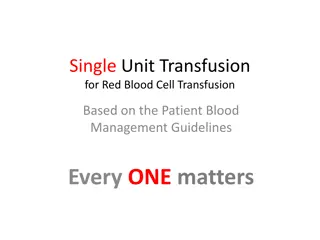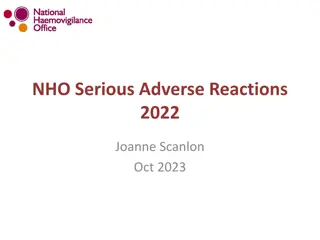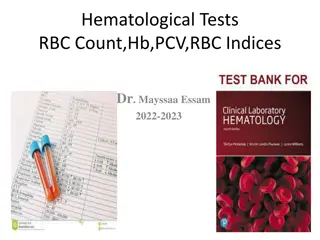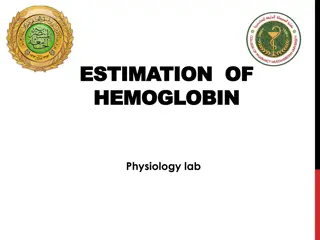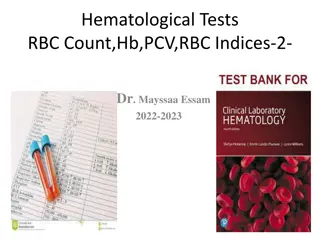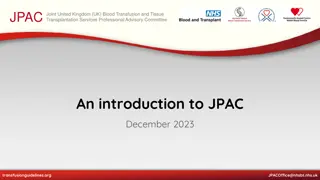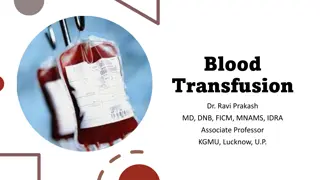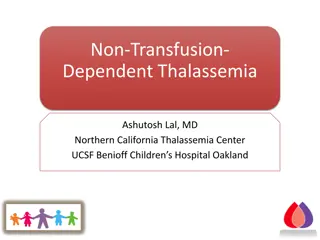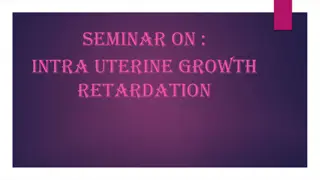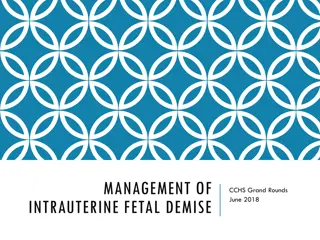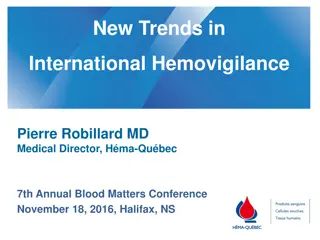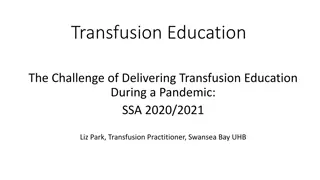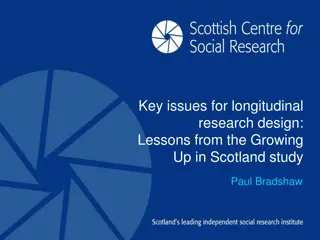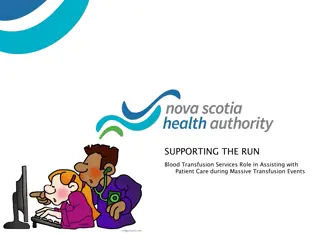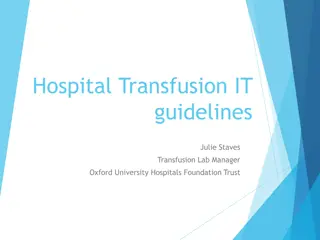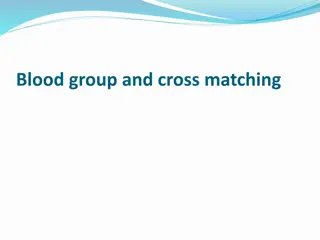Longitudinal Study on the Outcome of Intrauterine Transfusion in Hemoglobin Bart's Hydrops Fetalis
A study on the impact of intrauterine transfusion in hemoglobin Bart's hydrops fetalis, focusing on long-term outcomes and ethical considerations. The study aims to provide valuable insights for family counseling and therapeutic interventions in these cases.
Download Presentation

Please find below an Image/Link to download the presentation.
The content on the website is provided AS IS for your information and personal use only. It may not be sold, licensed, or shared on other websites without obtaining consent from the author.If you encounter any issues during the download, it is possible that the publisher has removed the file from their server.
You are allowed to download the files provided on this website for personal or commercial use, subject to the condition that they are used lawfully. All files are the property of their respective owners.
The content on the website is provided AS IS for your information and personal use only. It may not be sold, licensed, or shared on other websites without obtaining consent from the author.
E N D
Presentation Transcript
A longitudinal study on the outcome of intrauterine A longitudinal study on the outcome of intrauterine transfusion in hemoglobin Bart s hydrops fetalis transfusion in hemoglobin Bart s hydrops fetalis Ali Amid Children s Hospital of Eastern Ontario, University of Ottawa, Ottawa, Canada On behalf of: Ali Amid, Laura A Janzen, Catherine I Segbefia, Shiyi Chen, Uma Athale, Karen Charpentier, Manuela Merelles- Pulcini, Gareth Seaward, Edmond N Kelly, Isaac Odame, John S Waye, Melanie Kirby-Allen, Greg Ryan
Introduction Introduction Homozygous 0-thalassemia (hemoglobin Bart s hydrops fetalis) results from deletion of the duplicated -globin genes (HBA1 and HBA2) from both copies of chromosome 16p. Absent production of -globin chains results in the formation of hemoglobin Bart s ( 4) in the fetus, instead of fetal hemoglobin ( 2 2). Hemoglobin Bart s has an extremely high oxygen affinity, which results in ineffective tissue oxygen delivery. Progressively severe anemia, tissue hypoxia, and cardiac hypertrophy and dysfunction lead to hydrops fetalis and, frequently, intrauterine fetal demise (IUFD). Hb Bart s hydrops fetalis is the most common cause of hydrops in Southeast Asian population Chiu DH and Waye JS, Blood 1998, Amid A et al, Blood 2016
Background Background Data on long-term survivors of hemoglobin Bart s hydrops fetalis has been generally limited to case reports. An international consortium of Hb Bart s hydrops fetalis has reported the long-term outcome of 69 survivors, however, the study was not designed to evaluated the effect of intrauterine transfusion. There is a paucity of data on the effectiveness and ethical aspects of intrauterine transfusion for these patients. This longitudinal study was designed to evaluate the outcome of intrauterine transfusion in hemoglobin Bart s hydrops fetalis, providing important information for effective family counselling and therapeutic intervention. Songdej D et al, Blood 2017
Study setting: Ontario, Canada Study setting: Ontario, Canada Ontario is Canada s most populated province. Approximately 14 millions Diverse ethnic population, including many originally from regions with high rates of - thalassemia mutations. ~4% Southeast Asia Has approximately 140,000 births per annum. Statistics Canada, 2015
Data Collection Data Collection Genotype of all Hb Bart s hydrops fetalis cases (fetuses and newborns) diagnosed in Ontario: From 1989 to 2015, the Provincial Molecular Diagnostic Laboratory at McMaster University. Data on pregnancy and delivery from the Fetal Medicine Unit at Mount Sinai Hospital, Toronto, the main fetal therapy center in Ontario. Data on long-term outcome were collected from the all of the four comprehensive thalassemia clinics in the province. Toronto, Ottawa, Hamilton, London Data from 24 patients with transfusion-dependent beta-thalassemia (TDT- ) were used as controls for comparison of growth, transfusion-related iron overload and endocrinopathies.
Results: epidemiology and genetics Results: epidemiology and genetics Ninety-nine affected fetuses were identified, all from singleton pregnancies. On overage 4-5 affected pregnancies were diagnosed per annum. 3-4:100,000 pregnancies in Ontario All patients were of Southeast Asian background. 1:1000 in pregnancies in Southeast Asian population in Ontario Identified mutations were as follows: --SEA/--SEA: 88 pregnancies --FIL/--THAI: 9 pregnancies --SEA/--THAI: 1 pregnancy --SEA/--HW: 1 pregnancy
Results: intrauterine intervention Results: intrauterine intervention Of the 99 diagnosed pregnancies: Pregnancies affected: 99 74 were terminated or resulted in miscarriage 12 continued to delivery without IUT 13 received x1-4 IUT 9 at or before 28 weeks gestation 4 after 28 weeks gestation Terminated or miscarriages: 74 Diagnosed before termination: 66 Diagnosed after termination: 8 Continued with pregnancy 9 long-term survivors were followed for total of 92.1 patient- years. Survival rate was 36% in 25 pregnancies resulted in delivery Survival rate was 69% in those receiving intrauterine transfusion IUT: 13 No IUT: 12 IUT =<28 wks: 9 IUT >28 wks: 4 No patients without IUT survived the first week of life. 1 survived none survived 8 survived Of the 16 deceased neonates: 15 due to complications of hydrops 1 due to CMV infection (had IUT)
Results: prenatal Results: prenatal The gestation at first IUT was 18-32 (mean 26) weeks. The first fetal hemoglobin was 51-80 (mean 70.5) g/L: There was no correlation between the first fetal hemoglobin concentration and gestational age (r: 0.2649, p=0.45). Initiation of IUT later than 28 weeks gestation was associated with an increased risk of perinatal mortality (OR: 24.0, 95%-CI: 1.11-518, p=0.042). Compared to those who were transfused in-utero, babies with no intervention were born earlier (median 30 weeks [range 23-40] vs. 37 weeks [range 31-41], p=0.003).
Results: postnatal Results: postnatal All newborns received transfusion within the first month of life, and survivors has been on chronic transfusion since, except one transplanted patient. All male newborns had genitourinary abnormalities Hypospadiasis, undescended testis, micropenis 5 surviving patients had bone deformities Absent/deformed digits, rib deformity Only 3 newborns (all in IUT group) did not have evidence of hydrops at birth. All hydrops-related complication resolved in long term survivors 3 surviving neonates had portal vein thrombosis
Results: long Results: long- -term clinical outcome term clinical outcome Patients with homozygous 0-thalassemia developed iron overload and required initiation of iron chelation therapy at an earlier age compared to TDT- patients. Ferritin at 12 month of age: 1242 g/dL (SD 419) vs. 418 g/dL ( SD 113), p<0.001 homozygous 0-thalassemia patients had a comparable degree of liver iron concentration while on iron chelation therapy. LIC: 9.6 mg/g (SD 5.7) vs. 8.6 mg/g (SD 7.9) Endocrinopathies and short statue were observed more frequently in patients with homozygous 0-thalassemia.
Results: long Results: long- -term neurocognitive outcome term neurocognitive outcome Five patients underwent neurocognitive assessment and none showed any intellectual impairment. In three (of 5) patients older than 6 years, MRI studies demonstrated brain changes consistent with silent ischemic infarcts.
In Conclusion In Conclusion In areas with high rate of 0-thalassemia deletions and in high-risk couples (e.g. consanguinity), homozygous 0-thalassemia should be considered in differential diagnosis of hydrops fetalis. Early diagnosis of affected pregnancies coupled with appropriate counselling provides a basis for informed decision making and future family planning. Intrauterine transfusion, as well as specialized post-natal care can be associated with improve long-term outcome and should be offered to couples who elect to proceed with pregnancy. Survivors of Hb Bart s hydrops fetalis require chronic life-long transfusion, and are at higher risk of transfusion-related and thalassemia-related complications.
